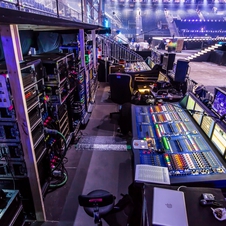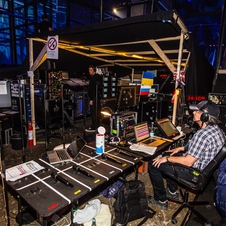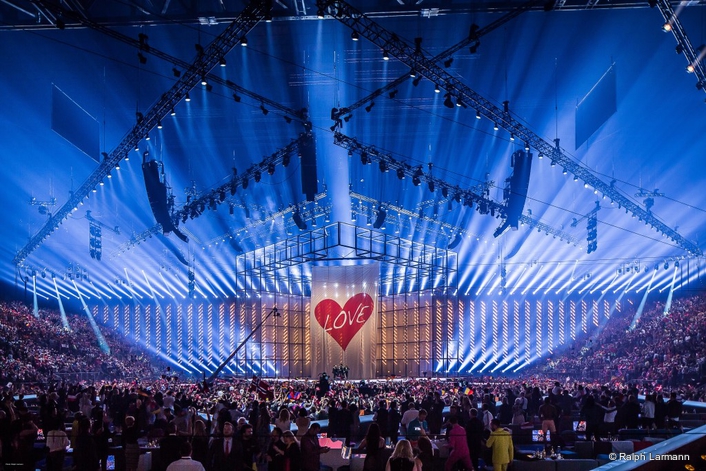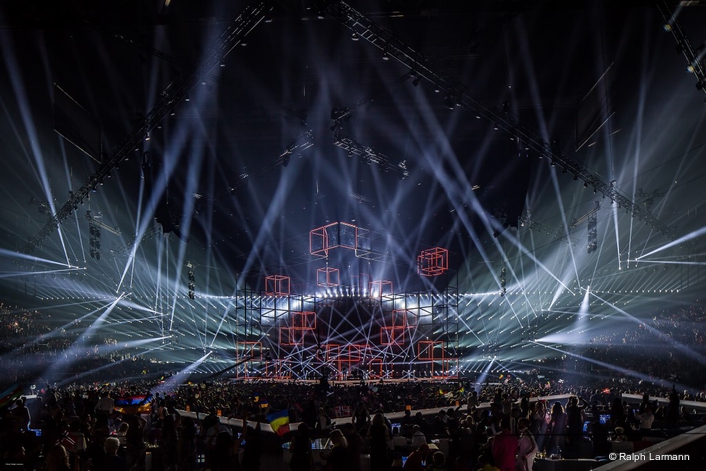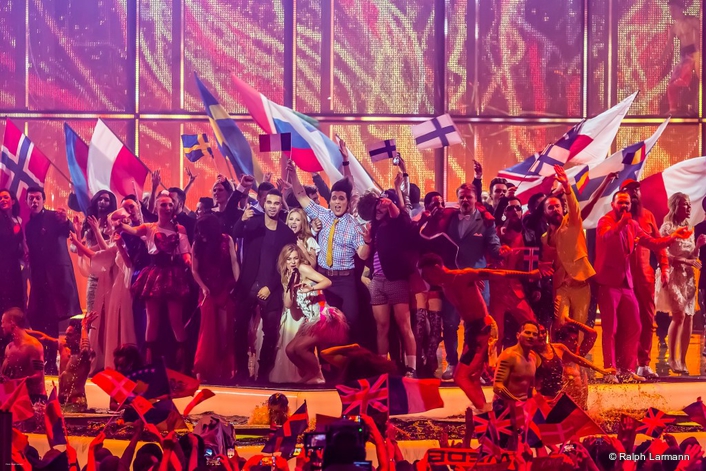Eurovision Song Contest reaches 195 Million Worldwide
posted:
Thirty-seven countries participated; this includes the return of Poland after a two-year absence and Portugal after a one-year absence. Overall, there were two fewer countries competing compared to the previous year, making thirty-seven participants, the smallest number since 2006. Bulgaria, Croatia, Cyprus and Serbia announced their withdrawal from the 2014 Contest. However more than 195 million viewers across 41 markets tuned into the 59th Eurovision Song Contest in Copenhagen, Denmark, won by Conchita Wurst with Rise Like A Phoenix on behalf of Austria. Reach has increased with nearly 10% compared to last year, when the contest reached approximately 180 million viewers in Europe and Australia. Figures released the following day showed Eurovision generated 5.4 million tweets on social media, with a peak Twitter activity of 47,136 tweets per minute when Wurst's victory was announced.
advertisment
Pushing the boundaries
46,320 parameters, 138 universes 1,380 moving lights, 1,500 spot (conventional, LED, effect), 10kms of data cable, 12kms of power multicore cable, 6kms of power cable: Danish lighting designer Kasper Lange relied on 7 x grandMA2 full-size and 2 x grandMA2 light consoles, 19 x MA NPU (Network Processing Unit) and 9 x MA 8Port Node for control. Amongst numerous Martin Moving Lights and PRG Bad Boys, Clay Paky Sharpy Wash 330, Clay Paky Alpha Beam 1500, Philips Vari*Lite VL3500 Spot, Philips Vari*Lite VL3500 Wash and Philips Vari*Lite VL5 were in the lighting rig. Furthermore Robert Juliat Cyrano and Robert Juliat Aramis were used as follow spots. SGM had been appointed an official technical event supplier as the evergreen event arrived in the company’s own back yard. This included the huge, classic SGM LED back wall — measuring 110 metres wide by 13 metres high — and it was here that over 350 SixPack blinders were used to dramatic effects.
advertisment
Lange worked with Eurovision’s creative director Per Zachariassen to create a huge, structural lighting design that complemented the show’s titanic ‘diamond’ stage. Lange crafted a clean, architectural lighting look that allowed the angular stage to ‘open and close’ creating a dynamic mix of open and intimate lighting looks.
“The brief for the show can be summed up in two words – big and simple,” explains Lange. “The contest was open to almost 40 different nations and each nation’s set needed a different lighting look. The challenge for us was to make each song look unique but also to introduce an organic flow throughout the show and not create a ‘mash’ of 37 songs.”
advertisment
GLP X4’s were selected by the LD for the impact they would create when suspended on eight long pieces of truss, with around 2m space in between — specifically deployed as audience effects lights. “Right from the beginning I had been looking for a powerful RGBW LED wash for the audience light,” Lange continues. “I have been using GLP impressions for the past four years and I am particularly impressed at the output, zoom and stability of the X4 fixtures.” The impression X4 derives its high brightness from the 19 RGBW high output LED’s. In its slimline body, with no base unit, the fixture houses a 7°-50° zoom range, full colour mixing (from soft pastels to deep saturates) including CTC and customizable pixel patterns across its front face.
Images and content could be delivered to four different display surfaces, including the 3,300m² LED back wall. There was also an LED floor, a ‘Cubus’ — 18 metres tall, set with LED panels and forming part of the stage design and a film that could either be transparent or opaque (to take projection).
advertisment
A crucial part of a much larger lighting rig, Lange specified 178 x Clay Paky Sharpy Wash 330 fixtures to frame the giant 110 x 30 metre LED back wall. The powerful punch of the Sharpy Wash added further definition to the wall whilst reflecting the sharp lines of light that ran throughout the Eurovision set.
“For this element of the design I wanted a small but very powerful wash fixture to sharply frame the large back wall LED screen,” Lange explained further. “The Sharpy Wash 330 was the natural choice and in fact it turned out to be the biggest work horse of the show. The fixtures are just incredibly reliable - throughout the entire two month production period for Eurovision we didn’t have a problem with a single one, and needless to say I was totally blown away.”
advertisment
In addition to the Sharpy Wash 330 Lange specified 32 x Clay Paky Alpha Beam 1500s as part of the huge lighting package supplied by a collaboration of Danish hire outfit LiteCom and global production house PRG.
The Alpha Beam 1500 belongs to the special category of fully automated ACL fixtures, in addition to its high luminous efficiency (185,000 lux at 10m) the fixture also holds a powerful effects engine for shaping and animating the beam for intense long distance and mid-air effects such as those seen in Lange’s Eurovision design.
“Because we had a SpiderCam and various other rope cameras filming the stage from above we couldn’t rig any trusses below 30 metres,” explains Lange. “This meant we needed a fixture with a throw powerful enough to cover the whole 30 metres. PRG introduced Clay Paky’s Alpha Beam 1500s to me because of their solid, super concentrated long throw beam. I was very impressed by the fixtures, they were the perfect tool for the job.”
advertisment
And Lange continuous: “On a system of this size there is really only one control choice today – the grandMA2. The console allows multiple users to access the same show file simultaneously. Also we had the great advantage of MA 3D, both for pre visualisation and for blind editing on site. We were quite surprised to experience a stunning 25 fps with the full rig visualised!”
Programmer Nicolai Gubi Schmidt added: “The synchronized DMX output across a big network was a big benefit. The MA part of the ESC network used 17 x Luminex GigaCore switches. Also the ease of working with timecoded shows on the grandMA2 was great.”
Johnny Sørensen, Timo Kauristo, Thomas Brockmann, Leif Hellberg, Rasmus Bremer and Kristian Sørensen worked as programmers. The Creative Director was Per Zachariassen, the Head of Production was Kamilla Monies, the eye-catching set was designed by Claus Zier and the show’s Creative Director/Content Producer was Nicoline Refsing.
advertisment
Reflections on Eurovision Island
For the audio transmission of the show host broadcaster Danmarks Radio (DR) relied on Sennheiser’s Digital 9000. 96 channels of this digital wireless microphone system were deployed for the contest, the VIP area and the press centre which included part of DR’s own 24-channel Digital 9000 system. Then added to this were 28 channels of the 2000 Series for the artists’ wireless monitoring. Unfortunately, the B&W Hallerne on Eurovision Island proved to be an incredibly difficult environment for all users of RF wireless, not only for wireless microphones and monitoring systems.
Jonas Næsby, RF specialist with Sennheiser Nordic, was on site for DR to provide assistance to the broadcaster with the microphone and monitoring set-up. “We knew that the available spectrum was very limited as 22 TV channels were already fully occupied. This made frequency planning slighly difficult – especially as wireless mics were not the only devices that needed spectrum,“ explained Jonas Næsby. “However, the biggest challenge we faced was unquestionably the hall itself.”
advertisment
Both the walls and roof of the huge shipyard are made of metal – as were the stands that were specially erected for the audience of 12,000. The floor is made up of heavily reinforced concrete and this proved to be considerably more critical than that of standard venues. “Never before have I encountered such a huge amount of reflections and if somebody had told me that they knew of an arena that could affect RF transmission this much then I would never have believed it prior to this experience,“ continued Jonas Næsby.
With a length of approximately 175 metres and a height of 70 metres, the metal hall caused reflections that partially ran over 300 metres and then hit the receiving antennas with a considerable delay as compared to the direct signal. However, the usual amount of damping did not occur: the indirect signals had much higher signal strengths than typically encountered in music venues. This phenomenon was caused by the metal walls and ceiling, which formed corner reflectors and boosted the signal by in-phase additions.
Special solutions for the B&W Hallerne
The wireless technology also had to battle with the general frequency situation in Denmark and nearby Sweden: “Unfortunately, having a lot of reflections within the hall does not automatically mean that your hall is entirely shielded against the outside,” explained Jonas Næsby. It proved to be quite the opposite as there were enough gaps and also wooden elements to let RF in – with some frequencies more intense than others. “As an example, in addition to the 22 fully occupied TV channels that we had to cope with, there was a relatively wide and loud test signal that appeared out of nowhere at irregular intervals and would then disappear. In total, we co-ordinated some 150 microphone and in-ear frequencies, around 100 of which were used for the actual TV show production. The remainder were used at the VIP area, the press centre and so on. If the Digital Dividend II had already been in place, we would definitely not have had sufficient spectrum.”
“We had pretty much optimised everything that was there to be optimised: the fine-tuning of the Digital 9000 system, the antenna positions, everything. And of course conditions improved a bit when the audience was in place,” continued Næsby. “In addition, we had also adapted the digital signal processing of the system which meant that even signals that arrived at the receiver extremely late and with high signal strengths were correctly combined with the RF signal that had arrived earlier. This meant that the Digital 9000 firmware was able to detect such critical instances and could cope with such extremely rare problems. This could not have been achieved with an analogue system and in fact would neither be possible with just any digital system.”
Special Cameras
In addition to a RTS Liftarm on rails RTS again operated the RopeClimber running on 80 meters of tracks mounted in a hanging position. The RopeClimber slided smoothly through the Arena with an amazing speed of 8 m/s while also moving vertically by 2 m/s. RopeClimber was equipped with the Nettmann STAB-C Compact fully stabilized remote head including Broadcast camera.For the first time this year Skywalker Systems delivered an 8wire 3D camera system with speeds up to 10m/s providing smooth free flying and motion repeat controlled flights over the audience and over the stage, as well as a 4wire 2D camera system with speeds up to 6m/s above the stage and which could drop from 30 Meter height right in into the action! Both rigs where flying with a full stabilized 3 axis Libra remote head from Camera Revolution UK. Visual overlays were used in the motion controlled shots to provide even more stunning looks during the broadcast of this amazing production.
During rehearsal and shows, the Skywalker Systems were flying over 300 Kilometers and in the 3 live shows Skywalker had around 350 shots of which 90% where already preprogrammed to the precision of a centimeter. A total amount of 2000 meters of rope were moving through the venue while both rigs were flying into action!
Not one bad seat in the house at Eurovision
Eight projection screens measuring 6.5m each and 130 flat panel displays were installed in the auditorium, green room and off-stage areas, to ensure waiting contestants and the audience didn’t miss a single note or vote from the show. In close collaboration with Panasonic, AV Center Copenhagen managed to meet the organiser’s high expectations by providing a reliable, state-of-the-art technology solution at an extremely competitive cost.
Traditionally, the voting announcement during the Grand Final is the most popular element of the three live shows.
Overall, the Grand Final of the Eurovision Song Contest achieved an average market share of 37.3%, more than twice the average prime-time market share. Denmark (89%), Austria (53%), the Netherlands (65%) and the United Kingdom (45%) saw the highest Eurovision Song Contest market share of the past ten years.
At any given moment, an average of 61 million people were watching the show, compared to 55 million watching last year's Grand Final on average.
The Grand Final saw an average market share of 41.6% amongst young adults, compared to 39.8% last year.
"These numbers show that the Eurovision Song Contest is very much alive across Europe, and that our audience is getting younger. This is crucial for the long-term success of the contest and important for the contestants," says Jon Ola Sand, Executive Supervisor of the contest on behalf of the European Broadcasting Union.
37 public broadcasters participated in the 2014 contest, which was transmitted live over the EUROVISION and EURORADIO networks via EBU Member DR. For the first time, the contest was also licensed in New Zealand and Canada.
"For the Eurovision Song Contest 2014, we invited viewers and fans to #JoinUs - and we're so happy that they did. On behalf of the entire team at DR, I'm proud to say that we have surpassed our own expectations for reach," says Pernille Gaardbo, Executive Producer of the contest in Denmark.
Vienna will host the 60th edition of the ESC
Next year's contest will be hosted in May 2015 by Austrian public broadcaster ORF. “Vienna is the city of music and arts in the heart of Europe. Together we will do everything to assure a successful 60th Eurovision Song Contest,” says Director General of ORF, Alexander Wrabetz.
"We are very pleased with ORF’s decision to choos Viennaas the host city of the next ESC,” says Jon Ola Sand, Executive Supervision on behalf of the EBU. “We are confident the city has the experience, people and the facilities to host the world’s foremost entertainment event. With the cooperation between Vienna, ORF and the EBU, I’m sure we’ll see three amazing shows in May.”
ORF gave several cities the opportunity to bid to host the contest next year. In the final round it was Vienna, Graz and Innsbruck still in the running. All candidates presented concepts for the implementation of large-scale events to ORF. Based on those , the final decision was taken in favor of the Wiener Stadthalle. It is located in the 15th district of Vienna and it was designed by the Austrian Architect Roland Rainer and built from 1953 to 1958. The arena has an overall seating capacity of approximately 16,000 people.
The Semi-Finals of the 60th Eurovision Song Contest are scheduled to take place on Tuesday 19th and Thursday 21st of May, the final is scheduled for Saturday, the 23rd of May.





